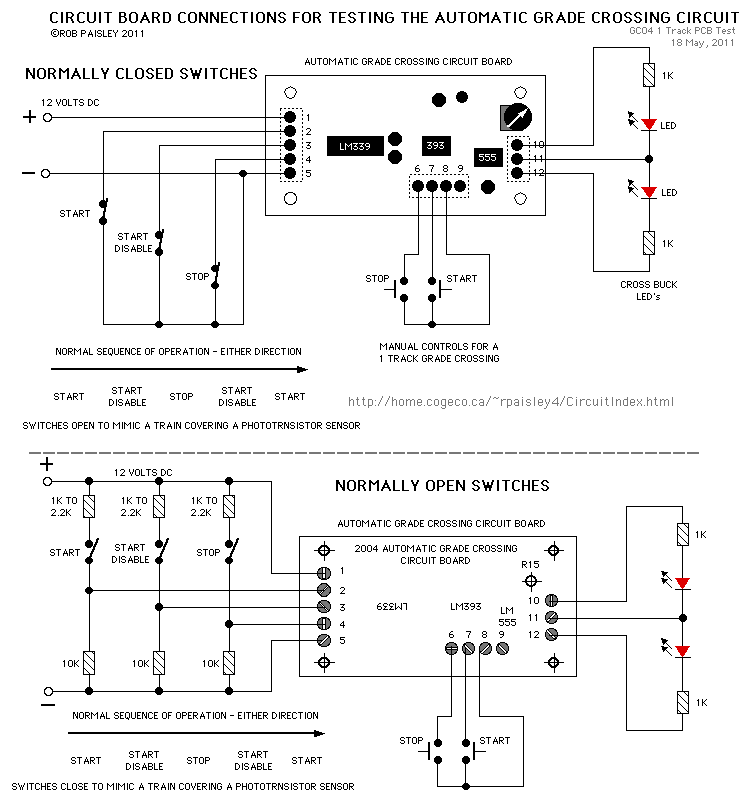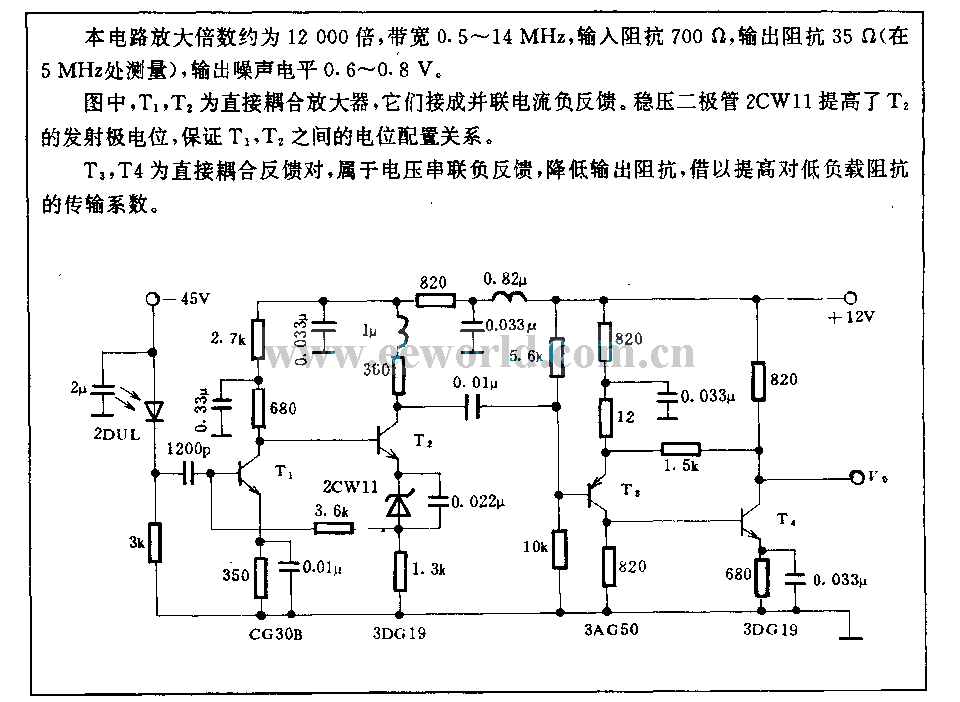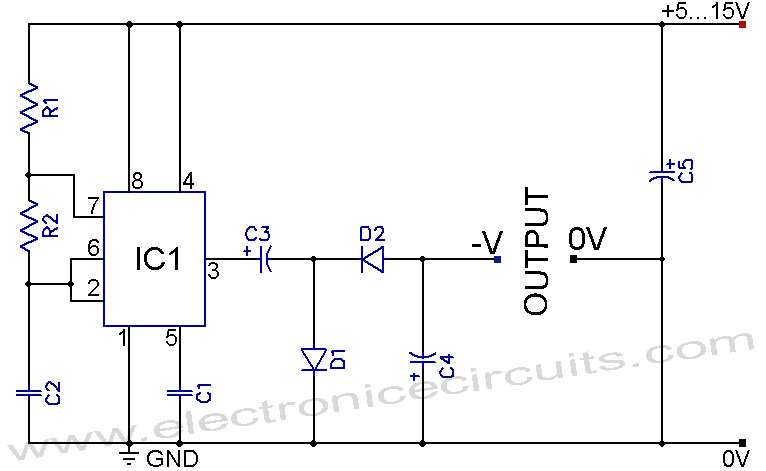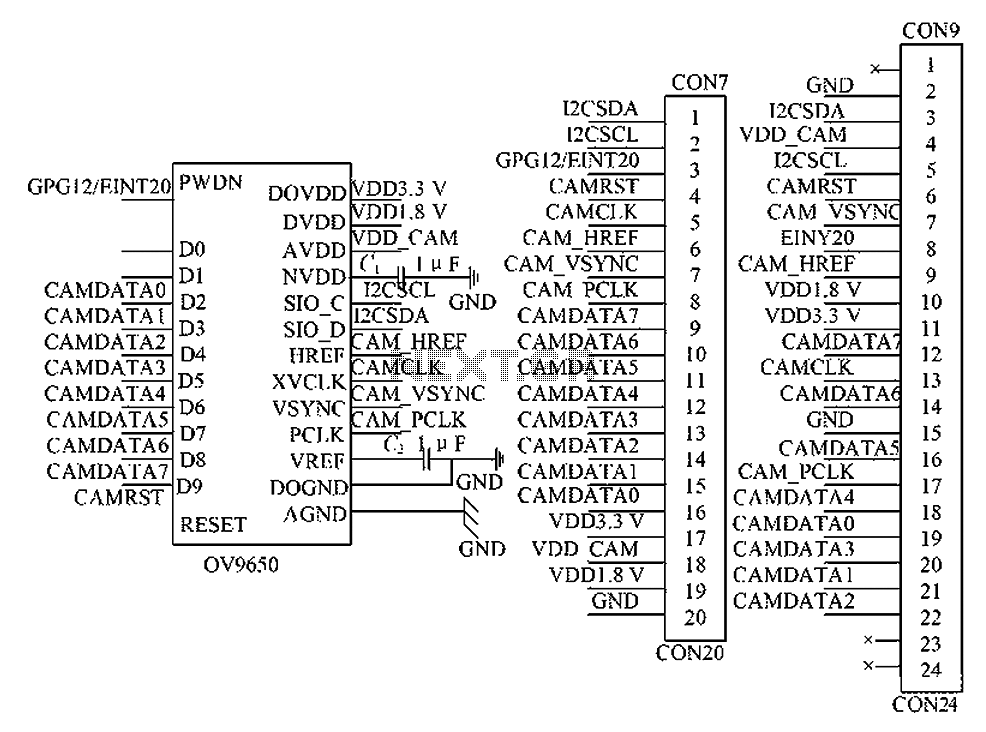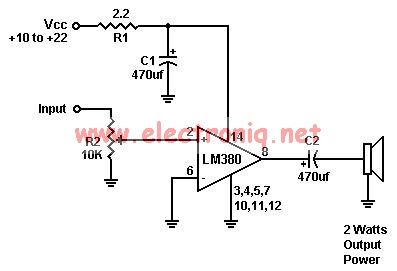
High-power lights flashing alternately chain circuit
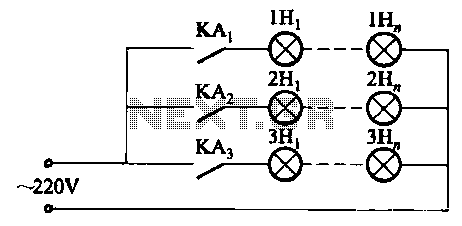
The relay control system utilizes multiple pairs of contacts, allowing for the connection of higher power lamps in parallel. The circuit design is straightforward; by altering the capacitance of the capacitor, different flashing frequencies can be achieved.
The described circuit employs a relay to control the operation of high-power lamps, which can be connected in parallel to increase total capacity. The relay serves as an electromechanical switch that opens and closes the circuit, enabling or disabling the lamp based on the control signal.
The key component influencing the flashing frequency is the capacitor, which works in conjunction with a resistor to form an RC timing circuit. When the capacitor charges and discharges, it determines the on-off cycle of the relay, thereby controlling the lamp's flashing rate. By selecting capacitors of different capacitances, the time constant of the RC circuit can be modified, resulting in varied flashing frequencies.
In this configuration, it is essential to ensure that the relay contacts can handle the total current drawn by the lamps. Additionally, protective components such as diodes may be included across the relay coil to prevent back EMF from damaging the control circuit when the relay is de-energized.
This simple yet effective design allows for versatile applications in decorative lighting, signaling, or any scenario where variable flashing is required. Proper selection of components and careful consideration of the relay's specifications will ensure reliable operation and longevity of the circuit.As a result of the relay control (several pairs of contacts, if more capacity is connected in parallel), so the lamp power can be large, the circuit is very simple, just change the capacitor capacitance, you can get a different flash frequency.
The described circuit employs a relay to control the operation of high-power lamps, which can be connected in parallel to increase total capacity. The relay serves as an electromechanical switch that opens and closes the circuit, enabling or disabling the lamp based on the control signal.
The key component influencing the flashing frequency is the capacitor, which works in conjunction with a resistor to form an RC timing circuit. When the capacitor charges and discharges, it determines the on-off cycle of the relay, thereby controlling the lamp's flashing rate. By selecting capacitors of different capacitances, the time constant of the RC circuit can be modified, resulting in varied flashing frequencies.
In this configuration, it is essential to ensure that the relay contacts can handle the total current drawn by the lamps. Additionally, protective components such as diodes may be included across the relay coil to prevent back EMF from damaging the control circuit when the relay is de-energized.
This simple yet effective design allows for versatile applications in decorative lighting, signaling, or any scenario where variable flashing is required. Proper selection of components and careful consideration of the relay's specifications will ensure reliable operation and longevity of the circuit.As a result of the relay control (several pairs of contacts, if more capacity is connected in parallel), so the lamp power can be large, the circuit is very simple, just change the capacitor capacitance, you can get a different flash frequency.
